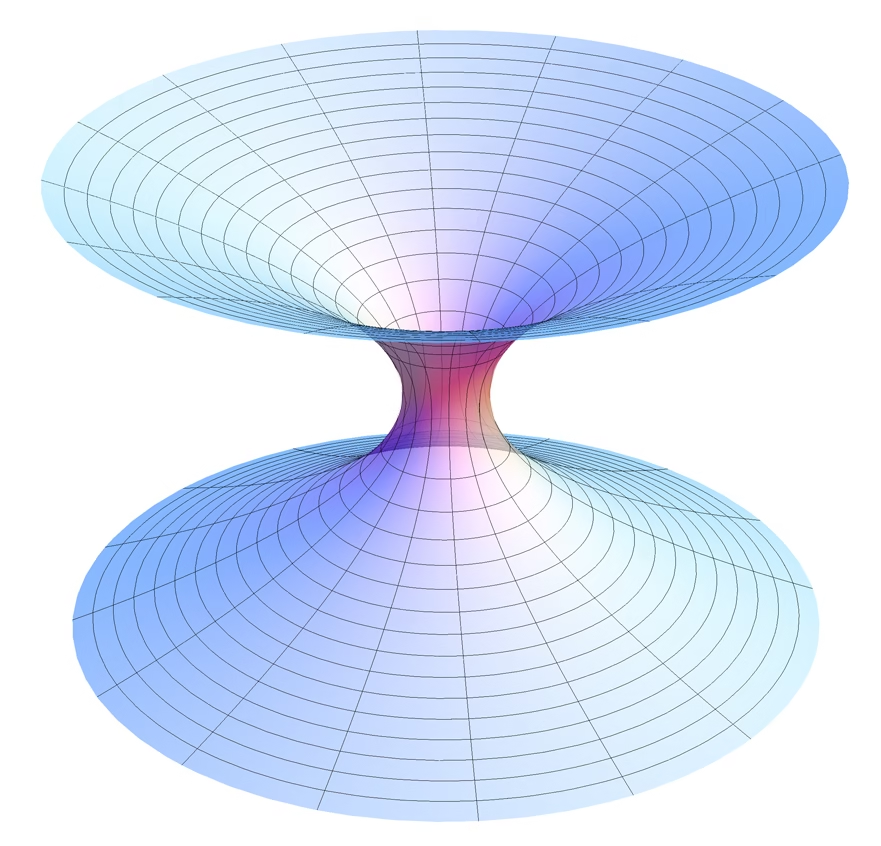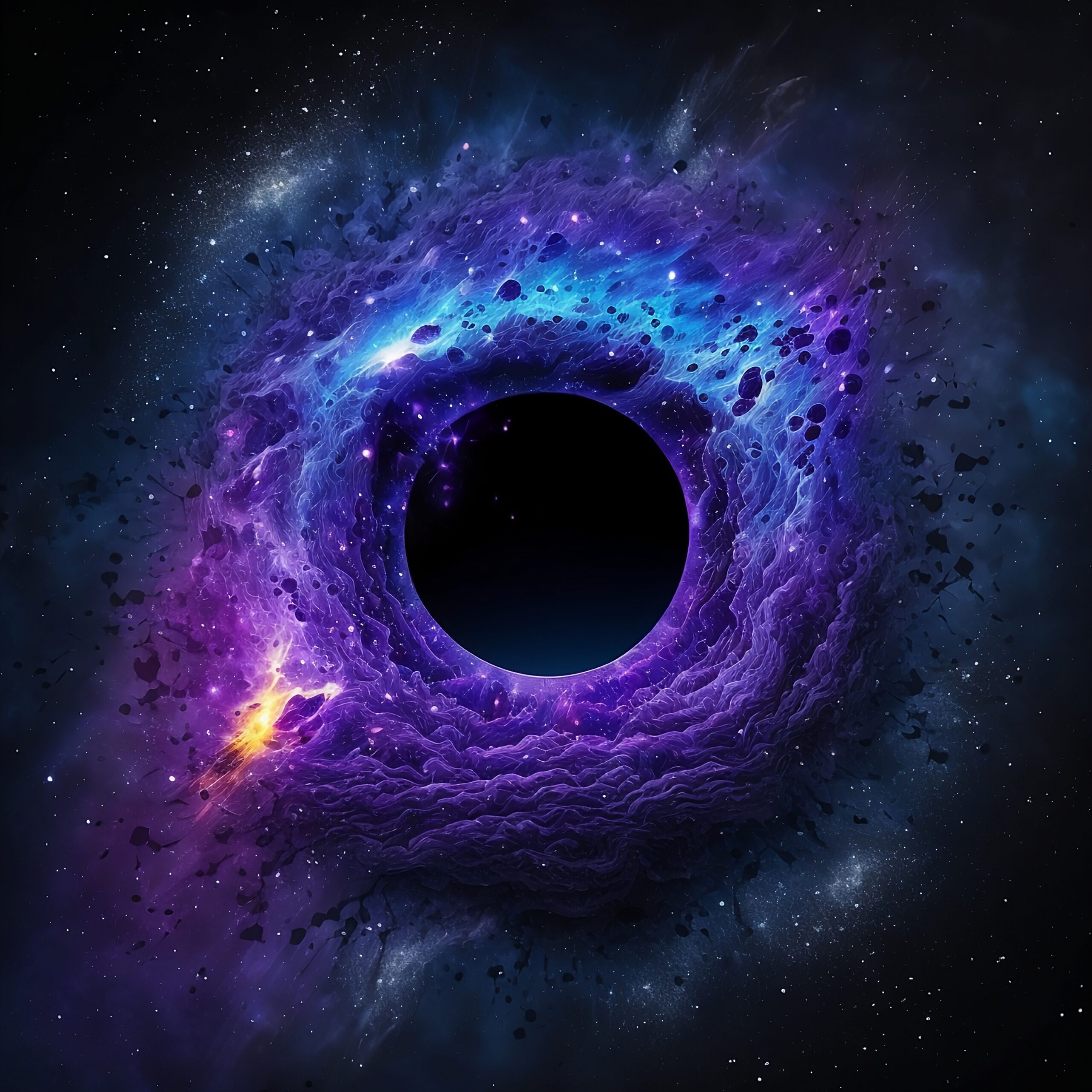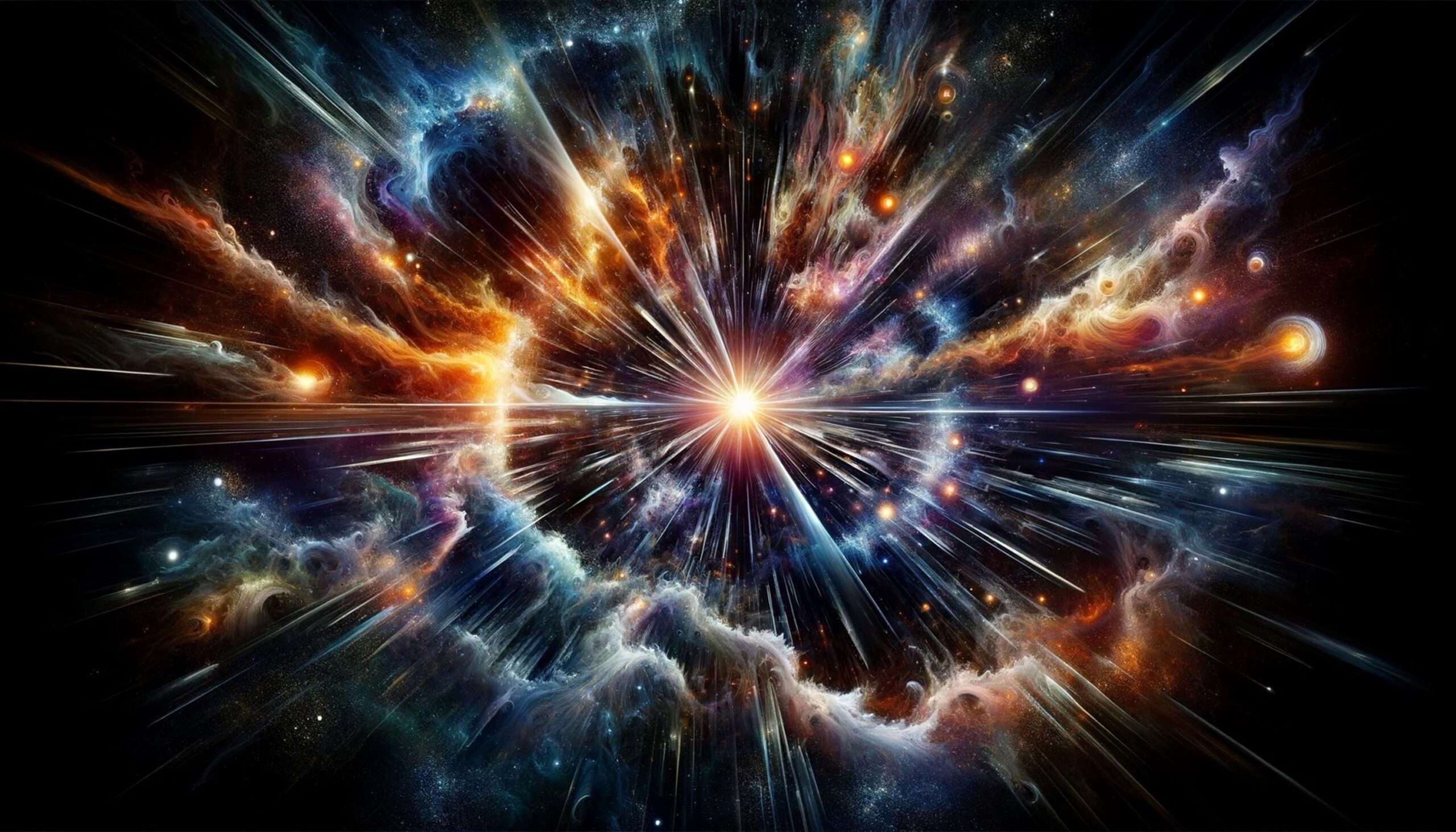Introduction
“What if black holes weren’t just cosmic vacuum cleaners, but actual doorways to another universe?”
Black holes have always fascinated us. They are mysterious regions in space where gravity is so strong that not even light can escape. People usually think of black holes as “vacuum cleaners” that suck up everything around them. But what if they’re not just destructive forces? What if black holes are portals to entirely different universes?
On the other hand, there’s another mysterious idea: wormholes. These imagined tunnels in space could connect far-away parts of the universe or even link different universes.
What is a Black Hole?
A black hole is a region in space where gravity is so strong that not even light can escape. These strange objects form when large stars collapse under their weight at the end of their lives. The result is a dense, invisible core where matter is packed tightly, and gravity is compelling.
Black holes have two main features:
The Event Horizon: This is the “point of no return.” Once something crosses this boundary, it’s pulled into the black hole and can never escape, not even light.
The Singularity: At the center of a black hole is the singularity, where gravity is so strong that space and time don’t behave normally. Matter is crushed to an infinite density, and scientists don’t fully understand what happens there.
In science fiction, black holes are often confused with wormholes, which are theoretical “shortcuts” through space. Both black holes and wormholes are sometimes shown as dark, mysterious openings in space, but they are different. While black holes trap everything that crosses their event horizon, wormholes, if they exist, would work as portals connecting distant parts of the universe or even other universes.
What is a Wormhole?
A wormhole is a theoretical idea in physics that suggests there could be tunnel-like passages in spacetime, connecting two distant points in the universe. Imagine folding a piece of paper and poking a hole through it—this represents a wormhole, linking two separate parts of space with a shortcut. In theory, it could drastically reduce travel time and even allow travel between different universes.
The concept of wormholes comes from Einstein’s theory of General Relativity, which shows that large objects like stars and planets can bend and warp spacetime. According to this theory, spacetime could, in principle, allow structures like wormholes, though none have been found or proven to exist.
There are two main types of wormholes:
Einstein-Rosen Bridges: These are theoretical structures based on Einstein’s equations. They represent a connection between two black holes, one at each end of the tunnel. However, they are not practical for travel because the tunnel would collapse before anything could pass through.
Traversable Wormholes: These are a more speculative type of wormhole that could, in theory, allow travel between distant points in space. For these wormholes to be stable enough for travel, they would need “exotic matter”—a type of matter with negative energy or pressure, which scientists have not yet observed but believe might exist. If this exotic matter were found, it might allow people or objects to travel from one end of the wormhole to the other, skipping across huge distances in space.
Although wormholes are an exciting idea, they are still just theories, and their existence depends on materials and conditions that have not yet been discovered.

Page URL: https://commons.wikimedia.org/wiki/
Attribution: AllenMcC., CC BY-SA 3.0 https://creativecommons.org/licenses/by-sa/3.0, via Wikimedia Commons
Are Black Holes and Wormholes Connected?
The idea that black holes and wormholes might be connected is an exciting topic for scientists. Some believe black holes could be natural wormholes, acting as portals to other parts of the universe or even to different universes altogether. While this is still mostly speculation, several theories suggest a link between the two.
Einstein-Rosen Bridge Theory: In the 1930s, Albert Einstein and Nathan Rosen proposed a theory called the Einstein-Rosen bridge, which suggests that black holes and white holes (theoretical opposites of black holes) could be connected by a wormhole. According to this theory, a black hole might lead to a white hole, which would expel matter on the other side. In this scenario, black holes could act as entrances to wormholes, possibly allowing travel between different points in space. However, this idea remains theoretical, and the stability of such wormholes is a big issue.
Loop Quantum Gravity: This theory tries to combine quantum mechanics with general relativity. It suggests that spacetime is made up of small, discrete units rather than being smooth and continuous. Some versions of Loop Quantum Gravity propose that black holes might not end in singularities but could instead “bounce,” possibly leading to new universes. This suggests that when a star collapses into a black hole, it might create a bridge to another universe, making the black hole a kind of gateway.
ER = EPR Hypothesis: Proposed by physicists like Juan Maldacena, this hypothesis connects two big ideas in physics: wormholes (Einstein-Rosen bridges) and quantum entanglement (EPR pairs). It suggests that quantum entanglement, where particles are linked in a way that affects each other even across large distances, might be a form of microscopic wormhole. If this is true, it could mean that wormholes are deeply connected to quantum mechanics, possibly linking black holes and wormholes in ways we don’t fully understand yet.
Though these theories are exciting, none of them has been proven. While black holes might hold the key to discoveries about the universe, the connection between black holes and wormholes is still one of the biggest mysteries in modern physics.
Could We Travel Through a Black Hole to Another Universe?
The idea of traveling through a black hole to another universe or a distant part of space is fascinating but comes with huge challenges. While it’s an exciting concept in science fiction, the reality is that there are serious problems to overcome before this could even be possible.
Problems with Using Black Holes as Wormholes:
Spaghettification—Falling In Would Likely Destroy You: One of the biggest problems is a phenomenon called spaghettification. As you get closer to a black hole, gravity becomes much stronger at your feet than at your head (if you’re falling feet first). This causes your body to stretch and compress, eventually tearing you apart. The closer you get to the singularity (the center of the black hole), the stronger the pull. So, no matter how close you get, it’s almost certain that you wouldn’t survive.
Wormholes Require Exotic Matter to Stay Open:
Even if black holes could act as wormholes, they need to be stable enough to travel through. Theories suggest that exotic matter, which has negative energy and pressure, is needed to keep the wormhole open. This kind of matter hasn’t been observed yet and may not even exist. Without it, the wormhole would collapse before anything, or anyone could pass through.
The Interstellar Movie Hypothesis:
Could a Supermassive Black Hole Lead Somewhere Else?
In the 2014 movie Interstellar, the idea of traveling through a supermassive black hole is explored. The protagonist enters a black hole and ends up in a higher-dimensional space where time can be controlled. While this is a thrilling story based on some real scientific ideas, the chances of surviving such a journey are much less hopeful in reality.
Even with a supermassive black hole, which is larger and might cause spaghettification more slowly, the intense tidal forces near the event horizon would still likely destroy anything trying to pass through. The singularity at the center is still a mystery, and we have no way to predict what happens beyond the event horizon.
Theoretical Solutions to Surviving a Wormhole Journey:
Although traveling through a black hole or wormhole seems impossible now, scientists have suggested a few theories that could make it possible in the future:
Time Dilation: Einstein’s theory of General Relativity tells us that time slows down in strong gravitational fields. Near the event horizon of a black hole, time would slow down significantly. This might allow for a “safe” passage if gravity could somehow be avoided or lessened. However, once inside the event horizon, it’s unclear if time dilation could prevent destruction.
Quantum Gravity and Wormhole Stability: Some theories, like Loop Quantum Gravity, suggest that black holes could connect to other universes through a “bounce” at the singularity. Instead of being destroyed, an object might survive by passing through a fluctuation in spacetime, leading to another universe. However, this idea is still just a theory with no experimental proof.
Exotic Matter and Advanced Technology: If exotic matter could be discovered, it might be used to stabilize a wormhole, making it possible to travel through it. In the distant future, advanced technology might allow us to create stable wormholes, linking distant parts of space or even different universes. But this is pure speculation and would require technology far beyond what we have today.
Conclusion
In conclusion, black holes and wormholes are both fascinating and mysterious concepts in modern physics, but they are very different from each other. Black holes are regions of space with incredibly strong gravity, created when massive stars collapse. Once something crosses the event horizon of a black hole, it can’t escape—not even light. On the other hand, wormholes are hypothetical tunnels in spacetime that might connect far-off parts of the universe or even different universes. While black holes are real and observable, wormholes are still just a theory and haven’t been proven to exist.
The big question remains: if wormholes do exist, could they be used to connect distant galaxies—or even open paths to other universes? This possibility raises exciting questions about the structure of the universe and how spacetime works.
Could wormholes hold the key to future space travel? This question sparks our imagination, not just about exploring space, but also about uncovering the deepest mysteries of the cosmos. Studying black holes and wormholes could one day lead to discoveries that completely change our understanding of space, time, and the universe.
Share the knowledge with

